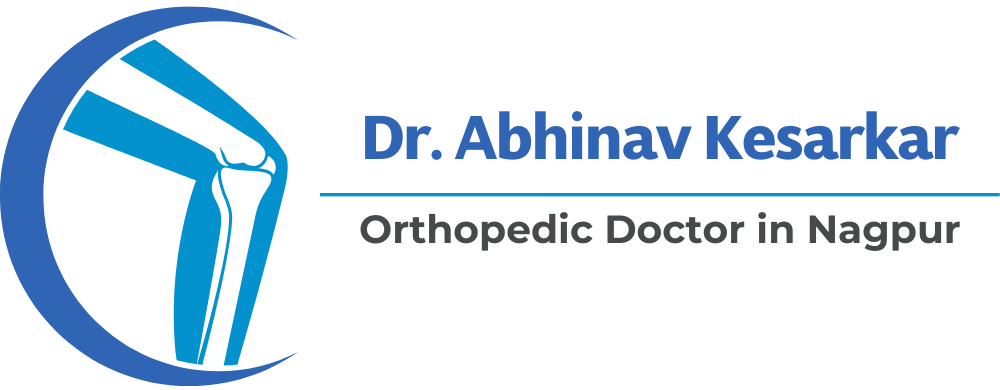Dr. Abhinav Kesarkar | Orthopedic Surgeon In Nagpur
Best orthopedic surgeon in Satna

Best orthopedic surgeon
A highly skilled and experienced surgeon who performs procedures related to the bones, joints, spine, and soft tissues. They could specialize in specific areas like joint replacement (knee, hip, etc.), spine surgery, or sports medicine
A medical center with excellent facilities, cutting-edge technology, and a team of expert orthopedic doctors and surgeons.
Who is an orthopedic surgeon?
An orthopedic surgeon is a doctor who helps people move better and live with less pain by treating bone and joint issues—sometimes with surgery, and often without.
An orthopedic surgeon is a medical doctor (MD or DO) who specializes in treating injuries and disorders of the musculoskeletal system, which includes.
- Bones
- Joints
- Muscles
- Tendons
- Ligaments
- Nerves
What does an orthopedic surgeon ?
1. Diagnose Problems:-
- They find out what’s causing pain or difficulty moving by:
- Examining the body
- Ordering and reviewing tests (X-rays, MRIs, CT scans, blood work)
- Asking about symptoms and medical history
2. Provide Non-Surgical Treatment
- Not all orthopedic problems require surgery. They often treat with:
- Medications (e.g. pain relievers, anti-inflammatories)
- Physical therapy
- Braces or splints
- Joint or steroid injections
- Activity modification or lifestyle advice
3. Perform Surgeries When Needed
- Joint replacement (hip, knee, shoulder)
- Arthroscopy (minimally invasive surgery using a camera)
- Fracture repair (plates, screws, or rods for broken bones)
- Spine surgery (for herniated discs or spinal deformities)
- Ligament and tendon repair (e.g., ACL reconstruction)
4. Rehabilitation and Follow-Up
- After treatment or surgery, they:
- Monitor healing
- Recommend exercises or physical therapy
Reasons to see an orthopedic surgeon?
1. Persistent Joint or Bone Pain
- Pain in the knee, hip, shoulder, back, or neck that doesn’t improve with rest or over-the-counter meds
2. Difficulty Moving or Loss of Mobility
- Trouble walking, bending, lifting, or using a limb
- Stiff joints or decreased range of motion
- Pain while climbing stairs, standing, or reaching
3. Injury From Accidents or Sports
- Broken bones (fractures)
- Dislocated joints
- Torn ligaments (like an ACL tear)
- Tendon injuries (like a rotator cuff tear)
4. Swelling, Numbness, or Tingling
- Swelling in joints or limbs without clear cause
- Numbness or tingling in arms, legs, hands, or feet (can signal nerve compression or injury)
5. Chronic Conditions
- Arthritis (osteoarthritis, rheumatoid arthritis)
- Osteoporosis (bone thinning)
- Scoliosis or other spine deformities
- Carpal tunnel syndrome
- 6. Failed Previous Treatments
When physical therapy, medication, or injections haven’t helpe
What to Expect at the orthopedic surgeon?
1. Before the Appointment
- Medical history (past injuries, surgeries, or conditions)
- A list of medications
- Imaging results (X-rays, MRIs, CT scans if already done)
- Notes on your symptoms: When they started, what makes them better/worse
2. During the Appointment
Medical History Review
- Your symptoms (pain, swelling, numbness, weakness)
- Any past injuries, surgeries, or chronic conditions
Physical Exam
- Examine the affected area (move joints, test strength, check swelling)
- Observe how you walk, stand, or move
Diagnostic Tests
- Order or review X-rays, MRIs, or CT scans
- Perform additional tests (e.g., blood work or nerve tests)
3. Discussion and Diagnosis
- The surgeon will explain what’s causing your symptoms
- Discuss treatment options, which may include:
- Non-surgical: physical therapy, medications, braces, injections
- Surgical: if the condition is severe or non-surgical options fail
4. Treatment Plan
- A customized care plan
- Referrals to other specialists if needed (e.g., physical therapist)
- Clear instructions on what to do next (follow-up, exercises, etc.)

